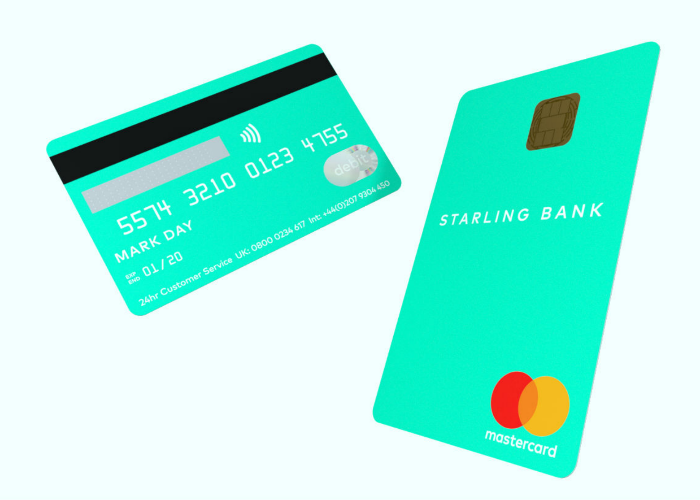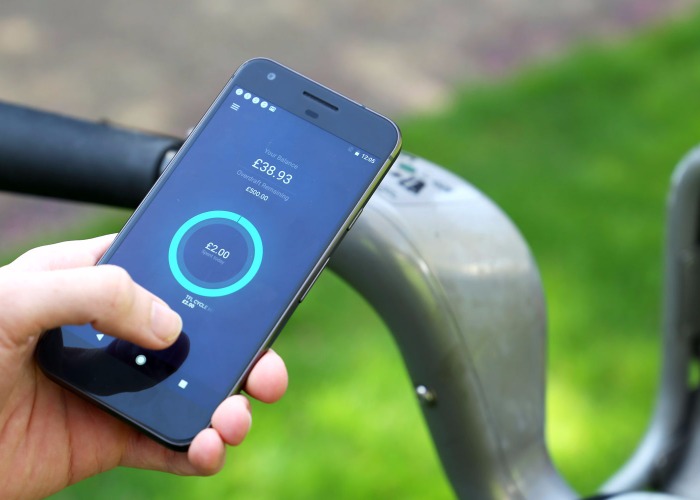Starling Bank’s vertical debit card: contactless payments, security concerns and alternatives

The mobile bank has introduced the biggest change in card design in a decade, with contactless payments in mind. But is it more secure?
Like our mobile phone photos and websites, money is going from landscape to portrait.
Starling Bank has introduced a vertical debit card, just months after Ulster Bank announced a new range of ‘upside down’ Sterling bank notes.
But whilst the latter is clearly a gimmick, Starling Bank’s new debit card isn’t just about image.
The mobile phone-based bank says the vertical cards reflect changes in behaviour, as we increasingly slot them into ATMs or make contactless payments.
Moreover, for the first time since credit cards were first introduced, all the customer’s details will all be on the back of the card, which Starling says could make it more difficult to copy information.
But is it really more secure? We looked at the card’s security features and how they stack up.
What is Starling Bank?
This isn’t strictly the first vertical debit card to be available in the UK: business bank Tide launched one back in February.
Although Starling Bank was only founded in 2014 it, along with rivals Monzo and Revolut, has caught the eye of younger people looking for a more convenient style of banking.

Starling doesn’t charge any fees on foreign transactions or cash withdrawals, making it the top current account for travelling.
It also pays a (somewhat limited) level of interest on your balance: 0.5% AER on balances up to £2,000 than 0.25% up to £85,000; the bank is covered by the Financial Services Compensation Scheme.
However, as it is mobile-only it can be difficult to deposit cash and cheques.
You can compare current accounts on loveMONEY's comparison site
Making cards more secure
Moving the cardholders' details to the back of the card has security benefits, Alexandra Frean, Starling’s head of corporate affairs, told loveMONEY.
“[It makes] it harder for someone to oversee and copy a customer’s personal details, both in person or unwittingly in a photograph posted on social media.”
Additionally, the debit card will no longer display a customer’s account number and sort code, as has become common in recent years.

However, having all the customer’s details on one side of the card – including the security code – means it’s now possible to record all those details in a single picture. Yet the same is true for American Express cards, without any discernible effect on fraud.
In any case, you should never hand over your card when making a contactless payment.
That way you keep control of the card and what the merchant sees.
Starling Bank is also among an increasing number of banks allowing you to control your card with the mobile app, including freezing online payments, cash withdrawals or disabling the contactless function.
Read our mobile banking app reviews of Barclays, NatWest, Santander, Halifax, TSB and First Direct.
Should we drop cards entirely?
Concern about card fraud and specifically contactless card fraud won’t go away – although recent scare stories about ‘skimming’ are far from accurate.
Several alternatives have sprung up, with South Africa biometric cards, which read your finger, and the UK’s Da Vinci Choice PIN-generating card.
Yet the solution may lie in the Google Pay and Apple Pay smartphone apps.

These apps have three advantages, the first of which is that they require a fingerprint, passcode or facial recognition; at the time of payment for Apple and when unlocking the phone for Google.
Secondly, these cards don’t store or share your card number with the merchant and finally, they don’t display your card’s full details on the phone screen.
These apps have another convenient, benefit: you can spend above the £30 contactless limit.
It’s possible that Starling Bank’s debit card could be the final hurrah of the physical debit card before it disappears entirely.
Comments
Be the first to comment
Do you want to comment on this article? You need to be signed in for this feature